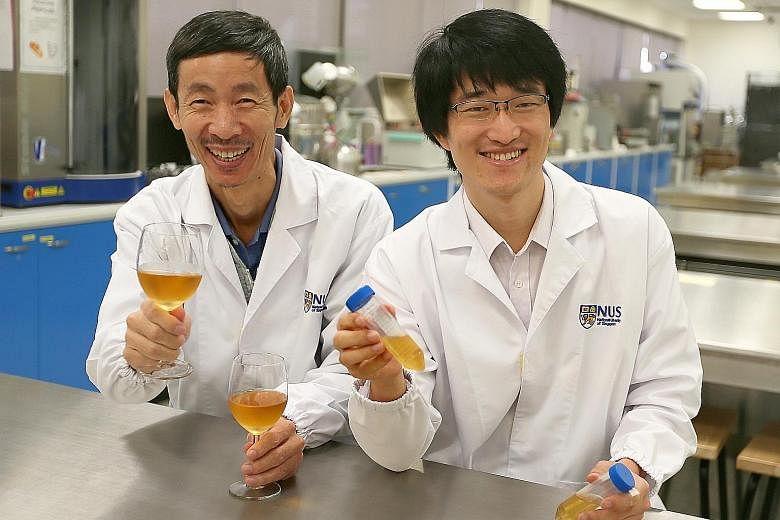A team at the National University of Singapore (NUS) has successfully created wines from tropical fruits, including mango, papaya, lychee and even durian.
It was not an easy process turning them into wine as these fruits have a lower sugar content than grapes.
Wine makers use yeasts to convert grape sugars into alcohol. In a way, the fruit sugars provide the "food" for the yeasts to work their magic, said Associate Professor Liu Shao Quan from the NUS Food Science and Technology Programme.
While the sugar content in a grape is usually between 20 and 25 per cent, that in durian pulp averages between 12 and 15 per cent. In a papaya, it is between 8 and 10 per cent.
"In the same way that humans need carbohydrates for energy, yeast requires sugar to synthesise other compounds, such as proteins and amino acids," said Prof Liu.
So what he and his team did is to enlist the help of "friendly" bacteria, like those in the human gut, to turn tropical fruits into wine.
By using the lactic acid bacteria Oenococcus oeni, the scientists managed to convert tart-tasting L-malic acid in the fruits to a more palatable L-lactic acid, in a process known as malolactic fermentation.
Both bacterial fermentation and yeast fermentation are used in the creation of tropical fruit wines - as with grape wines.
For both, yeast fermentation is known as primary fermentation, and it produces ethanol - which is what makes wine alcoholic.
The bacterial fermentation, considered secondary fermentation, is used to enhance the flavour of the wine. This is usually used to reduce the amount of L-malic acid in grape wines from cool-climate countries, which have a higher acid content.
But for the tropical fruits, the scientists used the process to produce more aromatic compounds , such as fruity- or flowery-smelling esters.
"We tried bacterial fermentation on fruits such as lychee and durian to see if we could modify or enhance the flavour and aroma," said Prof Liu. For the lychee wine, for instance, secondary fermentation helped release aromatic compounds like terpenes and terpenoids, typically associated with citrusy flavours.
The tropical fruit wines are still in a research phase, although commercial entities have expressed interest. Prof Liu said wine made from tropical fruits could provide an income source for countries with an abundant supply of such fruits.
Audrey Tan


